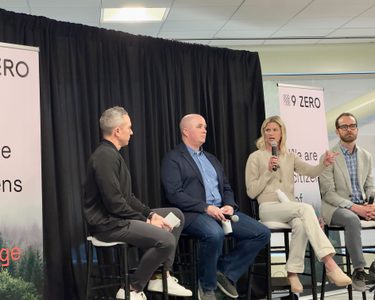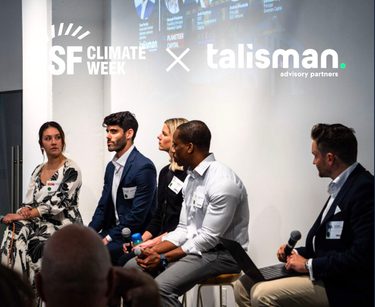
Conversations from SF Climate Week: The Missing Middle and Flexible Financial Solutions

San Francisco Climate Week offered a fascinating tapestry of dialogue, capturing the collective imagination and commitment of the climate tech community. S2G had the privilege to join the many conversations at the week’s worth of events.
We felt that many of the narratives and innovative ideas helped to enrich our understanding of key issues and hopefully can spur further action toward a sustainable future. The “missing middle” was largely trending (more on that below), and we were encouraged to see such interest in finding financial solutions for climate-oriented technologies. (For an in-depth look at this topic, see our report, “The Missing Middle: Capital Imbalances in the Energy Transition.”) We also observed that heat pumps and their potential energy-saving benefits were a continual hot topic.
At the same time, we found opportunities to help expand the conversation beyond solely energy themes and talk further about the climate-positive innovations in the food and agriculture sector, such as leveraging precision fermentation for food and ingredient production and also creating financial vehicles to help transition farms to organic practices.
As part of the many events, S2G team members offered their thoughts on several panels focused on climate finance and flexible capital solutions. Below are some of the highlights of these panels, offering a glimpse into the ideas shared throughout the week.

Financing the Missing Middle
S2G’s Andrea Woodside joined Brian Wayne and James Rich of Curvepoint Capital and Rob Day of Spring Lane Capital to discuss solutions to finance the missing middle (i.e., the capital gap between venture stage and growth stage businesses). The “missing middle” was not just a focal point of this panel discussion but also emerged as a recurrent topic across various forums the S2G team engaged in, underscoring its significance in today’s climate tech conversation.
The panelists also tackled innovative financing strategies that transcend standard corporate equity, including S2G’s Special Opportunities approach as well as the industry’s exploration and application of first-of-a-kind (FOAK) project financing. Key recommendations for climate tech companies, according to the panelists, involved the importance of strategic finance hires and an emphasis on asset-oriented businesses being equipped with contracts, collateral, or cash flows to attract project finance investors.

From Seed to Scale
Andrea also joined a roundtable, organized by Talisman Advisory Partners, sitting down with Hannah Friedman of Planeteer Capital, Josh Kaufman of Nexus Development Capital, and Christian Okoye of Generate Capital. Given the composition of the panel, the speakers offered a comprehensive view across the investment spectrum, from the venture capital insights of Planeteer Capital, focused on early-stage ventures, to the nuanced approaches of Nexus, Generate, and S2G, which specialize in project finance and asset-oriented investments at varying development phases.
The conversation captured the essence of what it means for a company to be deemed “investable” by each investment firm on the panel. The participants explored the diverse methodologies employed by each firm in assessing risk and the techniques for mitigating or shifting risk. Additionally, the conversation covered the challenges of scaling businesses, including the recruitment and retention of pivotal talent, an aspect that the panelists agreed is crucial for sustained growth and success in regard to business development.
Green Bank, Growth, and GGRF
As part of “Navigating Climate Finance” event hosted by Women in Climate Investing & Finance, Banyan Infrastructure, Streamline Climate, and Energize Ventures, S2G’s Marisa Sweeney joined Melissa Uhl of Elemental Excelerator and Tenzin Seldon of Pulse Fund in a conversation with Amanda Li of Banyan Infrastructure. This discussion explored the broader field of climate finance, underscoring the necessity for multiple sources of funding and the importance of appropriately scaled funding to tackle critical challenges. Diving deeper, the panelists noted the newly announced Greenhouse Gas Reduction Fund (GGRF) awardees, which will focus their deployment in investments and projects demonstrating strong community engagement.
In addition, ideas were shared on how entrepreneurs can strategically seek diverse financial resources, considering the spectrum of risk tolerance from early-stage ventures to more mature project financing. Marisa and the participants also navigated the hurdles of financing innovation, notably the disparities in funding for technology development versus large-scale deployment and the instrumental role of blended finance in filling these gaps, touching on the “missing middle” theme.
These panels were just a small subset of a plethora of formal and informal dialogue held during Climate Week. As we continue learning and exchanging more insights on climate innovation and finance, we hope to expand the conversation at future events like these and elsewhere.


